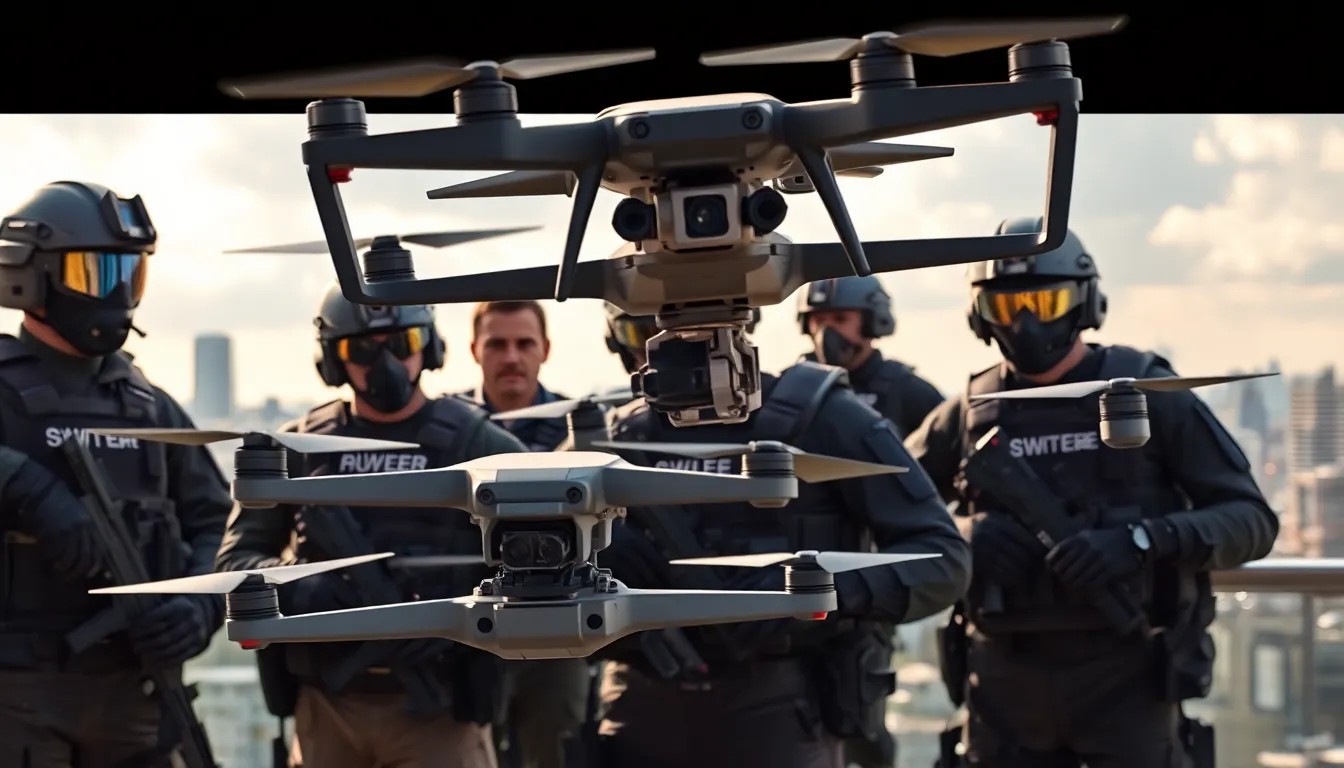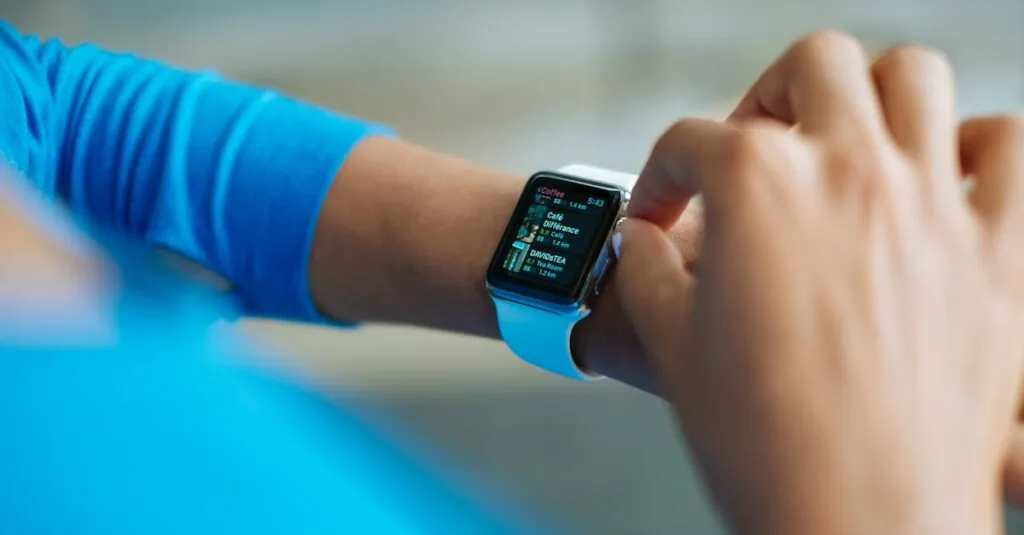Drones, once the stuff of sci-fi fantasies, have become the go-to gadgets for law enforcement, especially SWAT teams. Imagine a high-stakes standoff, and instead of sending in heavily armored officers, law enforcement deploys a sleek drone with cameras, sensors, and maybe even a cupcake delivery mechanism… Just kidding about the cupcakes. But really, these flying machines are changing the game, and it’s not just about looking cool while taking aerial selfies. From surveillance to crowd control, SWAT drones are revolutionizing tactical operations, bringing both excitement and serious implications. Let’s jump into the intriguing realm of SWAT drones, where technology meets tactical training and, surprisingly, efficiency. Buckle up.
Table of Contents
ToggleThe Evolution of Drones in Law Enforcement

The use of drones in law enforcement has come a long way since their inception. Initially, drones were primarily used for surveillance purposes in warfare. It wasn’t long before law enforcement agencies recognized their value in civilian settings. The early models were basic and often clunky, mostly equipped with simple cameras. Today, but, the landscape looks drastically different.
Modern drones are sleek, agile, and feature rich, equipped with high-definition cameras, thermal imaging, and even artificial intelligence. This evolution mirrors the rapid advancements in technology we experience every day. As drones become more affordable and accessible, law enforcement agencies across the country have eagerly adopted this innovative tool. SWAT teams now rely on them to gather intelligence before, during, and after operations. This shift has undoubtedly transformed the approach to handling high-risk situations.
Types of SWAT Drones
When it comes to SWAT drones, variety is the spice of tactical life. These drones can generally be classified into several categories based on their functionality:
Reconnaissance Drones
Designed for scouting purposes, these drones are equipped with high-resolution cameras that provide real-time video feeds. They help operators assess situations from a safe distance, making them invaluable in hostage scenarios or armed standoffs.
Tactical Drones
These are built for efficiency and agility, often featuring rapid deployment capabilities. They can be equipped with non-lethal weapons like rubber bullets or gas dispensers, allowing officers to address threats without resorting to lethal force.
Cargo Drones
These drones are capable of delivering supplies, such as medical kits or communication devices, into inaccessible areas. This type brings a new dimension to emergency responses in precarious situations.
Recognizing the right type of drone for each situation can significantly enhance the effectiveness of a SWAT team.
Technological Advancements in SWAT Drones
Technology doesn’t sit still, and neither do SWAT drones. Recent advancements have brought sophisticated features that drastically improve performance.
Enhanced Imaging
Gone are the days of grainy, low-resolution footage. Today’s drones feature thermal imaging and multi-spectrum cameras that allow SWAT teams to see in complete darkness and through obstacles, enhancing operational effectiveness.
Artificial Intelligence
With AI integration, drones can autonomously navigate complex environments, recognize potential threats, and even make real-time decisions to assist human operators. This intelligent approach not only builds situational awareness but also minimizes risks.
Longer Flight Times and Greater Ranges
Modern drones can fly for extended periods and cover larger distances, which is crucial for monitoring expansive areas without requiring constant recharge. This feature expands the operational capabilities of SWAT teams, allowing for more extended surveillance sessions.
Benefits of Using Drones in SWAT Operations
The inclusion of drones in SWAT operations is not merely a trend: it brings substantial benefits:
Increased Safety
Drones keep officers out of harm’s way during dangerous situations. By providing a bird’s-eye view, they allow teams to gather crucial intelligence while remaining at a distance.
Cost Efficiency
Deploying drones can save time and resources. They are often much faster than traditional means of reconnaissance, reducing the duration of operations and associated costs.
Resource Allocation
Drones free up personnel to focus on critical tasks. Instead of sending in a full squad for reconnaissance, a drone can perform the job faster and more efficiently, allowing the rest of the team to strategize for the situation ahead.
Challenges and Concerns Regarding SWAT Drones
Even though the myriad benefits, the deployment of drones does raise some challenges and concerns:
Privacy Issues
First off, there’s the question of privacy rights. The ability of drones to surveil vast areas can lead to ethical dilemmas about civil liberties. Citizens worry about being watched without consent, raising questions about accountability.
Security Risks
Besides, as with any advanced technology, SWAT drones are susceptible to hacking. A malicious actor could potentially take control and exploit these tools in harmful ways.
Lack of Training
Finally, many agencies face a shortage of personnel trained to operate these sophisticated devices. Effective deployment requires specialized knowledge and training, which some teams currently lack.
Case Studies: SWAT Drones in Action
To truly grasp the impact of SWAT drones, let’s explore a few notable case studies:
The Dallas Police Department
In 2016, during a tense standoff with a gunman who had five officers killed, the Dallas Police Department deployed robots and drones for surveillance. The aerial perspective allowed a clear assessment of the situation, eventually leading to the suspect being apprehended without more loss of life.
Use in Active Shooter Situations
In several recent active shooter incidents, drones were quickly mobilized to provide situational awareness to responding teams. Their ability to deliver live feeds and three-dimensional mapping has been game-changing in these critical moments.
These real-world examples illustrate just how valuable SWAT drones have become in mitigating risks and enhancing tactical operations.
The Future of SWAT Drones in Law Enforcement
The trajectory for SWAT drones appears promising, filled with potential advancements. Experts predict that integration with autonomous systems will become more prevalent, allowing drones to act as an integral part of the SWAT team’s strategic toolkit.
Also, ongoing improvements in drone battery life, payload capacity, and AI capabilities will further enhance their functionality. Law enforcement agencies may also develop stricter regulations about drone use, balancing utility with privacy concerns. Eventually, as technology evolves, so will the application of drones in law enforcement, continually reshaping the strategies employed by police forces.





